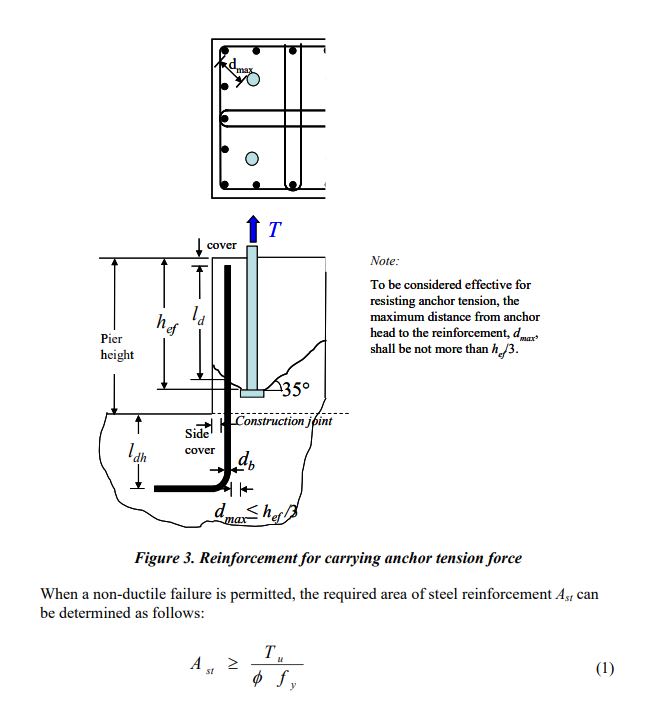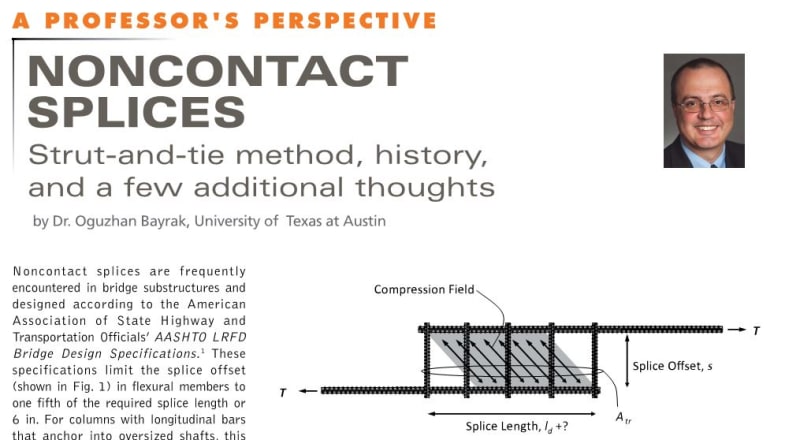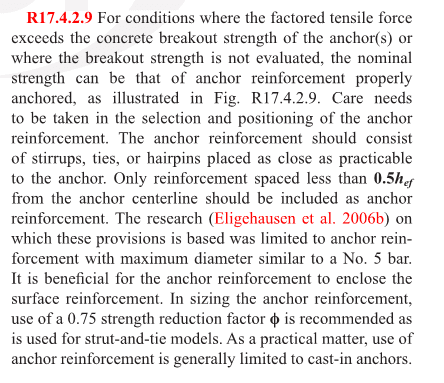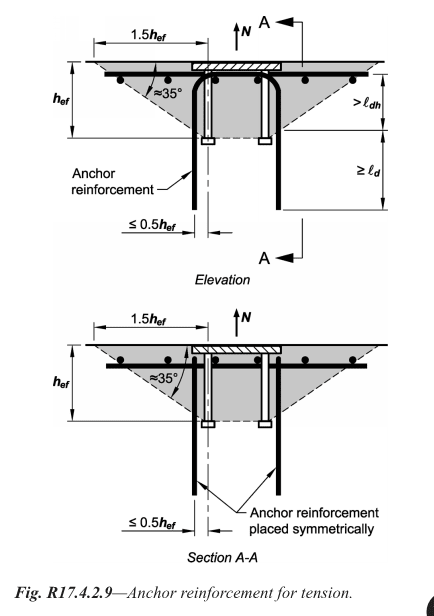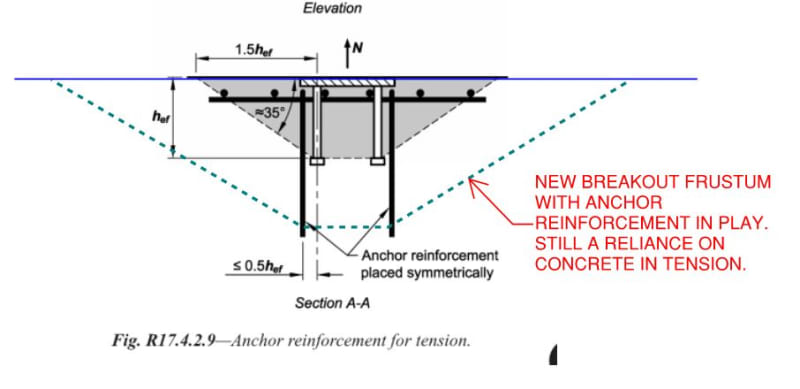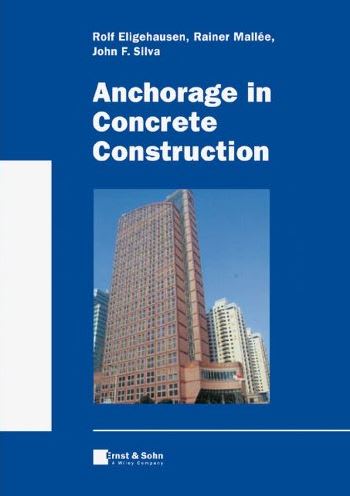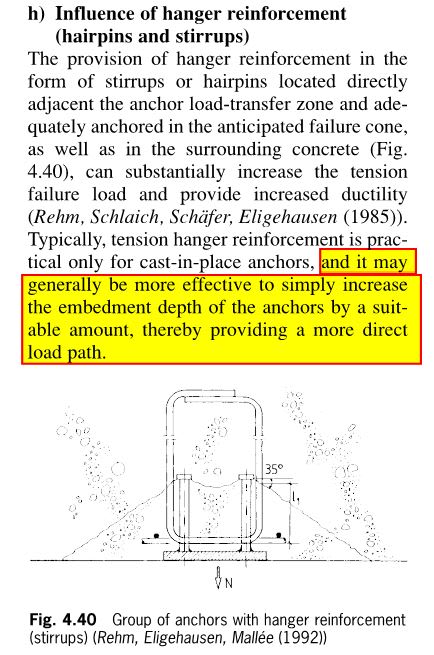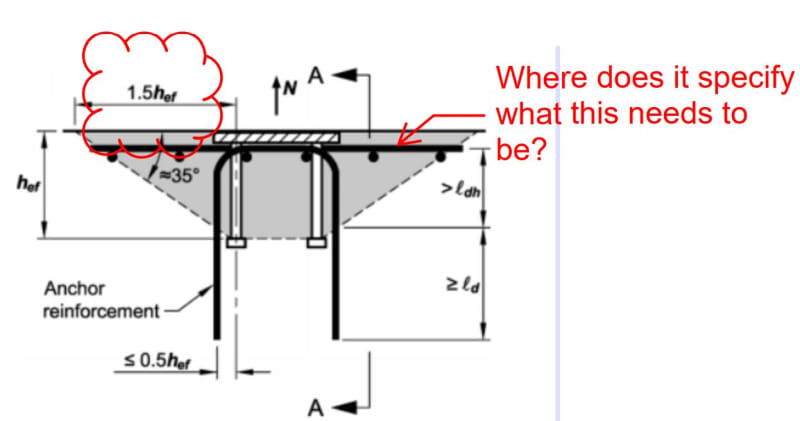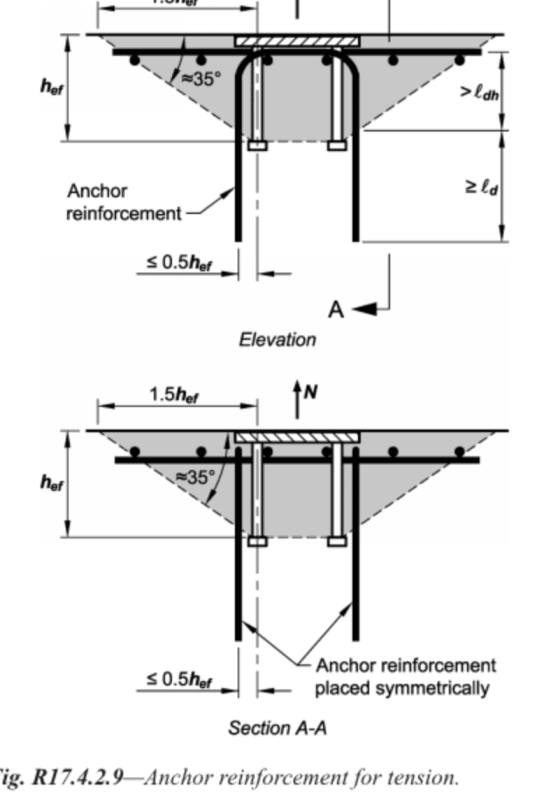Hi,
I am looking at the concrete pedestal reinforcement in seismic zone D for uplift on a column base plate. The commentary on ACI 17.5.2.1 states that research for allowing you to use the design strength of the anchor reinforcement instead of designing for concrete breakout strength was based on was or limited to anchor reinforcement with a maximum diameter of a #5 bar. Can you use something larger than a #5 bar as long as you meet the requirements in chapter 25 or is it better to keep the tension bars (I will be using U shaped bars) at #5 and then add more bars? I would need around (10) #5 bars instead of (5) #7 bars when using option D (17.10.5.3) and applying the overstrength factor to Eh. If I understand correctly all 10 bars would have to be within the .5hf (which would be 9" in my case for anchor bolts with 18" embed.) I also have a shear lug so placement of the reinforcement might get difficult. The pedestal is 24"X48" and it is 4' to 7' tall depending on the location in the wall.
Thanks for any thoughts or help in understanding this.
I am looking at the concrete pedestal reinforcement in seismic zone D for uplift on a column base plate. The commentary on ACI 17.5.2.1 states that research for allowing you to use the design strength of the anchor reinforcement instead of designing for concrete breakout strength was based on was or limited to anchor reinforcement with a maximum diameter of a #5 bar. Can you use something larger than a #5 bar as long as you meet the requirements in chapter 25 or is it better to keep the tension bars (I will be using U shaped bars) at #5 and then add more bars? I would need around (10) #5 bars instead of (5) #7 bars when using option D (17.10.5.3) and applying the overstrength factor to Eh. If I understand correctly all 10 bars would have to be within the .5hf (which would be 9" in my case for anchor bolts with 18" embed.) I also have a shear lug so placement of the reinforcement might get difficult. The pedestal is 24"X48" and it is 4' to 7' tall depending on the location in the wall.
Thanks for any thoughts or help in understanding this.

